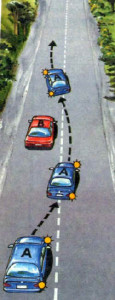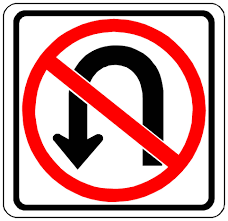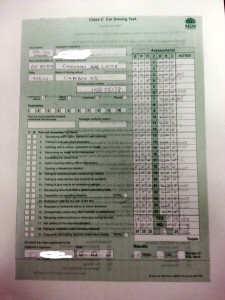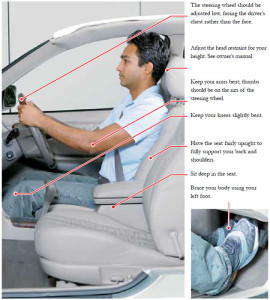Driving Lesson Overtaking
Overtaking other vehicles can be dangerous. The difficulty with overtaking is judging the space required to complete the manoeuvre safely.
Both single lane and multi-lane overtaking manoeuvres involve risk and require extreme care.
If you have any doubts it is best not to overtake and to wait until it is safer.
You must overtake on the right unless a vehicle is waiting to turn right, is
stationary, or if you and the other vehicle are travelling in marked lanes. In these
instances you may overtake on the left side if it is safe.

1. POSITIONING: If it becomes necessary to overtake do not tailgate the vehicle ahead as it will greatly reduce forward vision. Maintain a safe following distance.
2. SCANNING: Scan the road for approaching traffic, ensure you have enough space to safely complete the manoeuvre, check you know where the road goes next and that there are no dips or crests hiding vehicles. Some truck drivers may even flash their indicators to let you know it is safe to overtake them (in this situation, don’t just assume it is safe)
3. INDICATE: If safe indicate your intentions and check no one else is attempting to overtake you and the vehicle ahead.
4. PULL OUT: Pull out before accelerating forward so the driver ahead knows you are coming. Blip your horn if necessary to alert this driver.
5. THE RETREAT: If due to the unexpected or a miscalculation you are not going to make it, brake firmly and attempt to steer in behind the vehicle again. Do not accelerate, hope and pray.
6. THE FINISH: Pull in as soon as you can see the vehicle you have passed headlights in your centre rear vision mirror. A wave of thanks to the driver may be constructive.
When overtaking you must:
• Not go over the speed limit.
• Make sure the road ahead is clear and that there is sufficient space for you to
complete the manoeuvre (check side streets and other lanes to ensure nothing
will enter this space while you are overtaking).
• Check mirrors.
• Signal each change in position long enough to give sufficient warning to others.
• Check blind spots for motorcycles and other vehicles before changing your lane
position.
• Pass the vehicle with sufficient space to avoid a collision (you should be able to
see the vehicle you have overtaken in your rear vision mirror before you move
in front of it).
• Give way to traffic already in the lane you are moving to.
You must not overtake:
• Unless you have a clear view of any approaching traffic and you can complete
the manoeuvre safely (do not commence an overtaking manoeuvre when
approaching a crest, curve or any limited vision situation).
• Another vehicle that is stopping or has stopped at a pedestrian crossing,
intersection or railway crossing.
• Across an unbroken (continuous) line, unless the line closest to you
is broken.
• Where a road narrows.
On roads with a speed limit of more than 80 km/h, or a KEEP LEFT UNLESS
OVERTAKING sign, you must drive in the left lane unless you want to overtake
or turn right.
When being overtaken you must:
• Not increase your speed.
• Keep left and allow reasonable space for the overtaking vehicle to pass and move back into the lane.
• Keep within your lane.
You must not overtake or pass other vehicles on pedestrian or school crossings.



